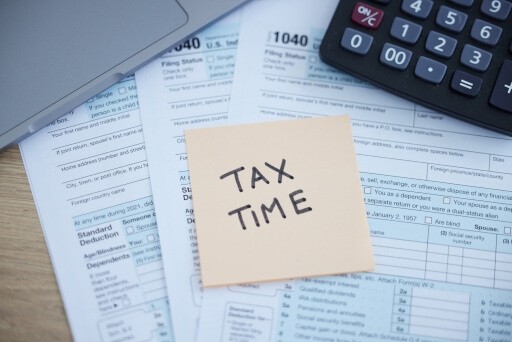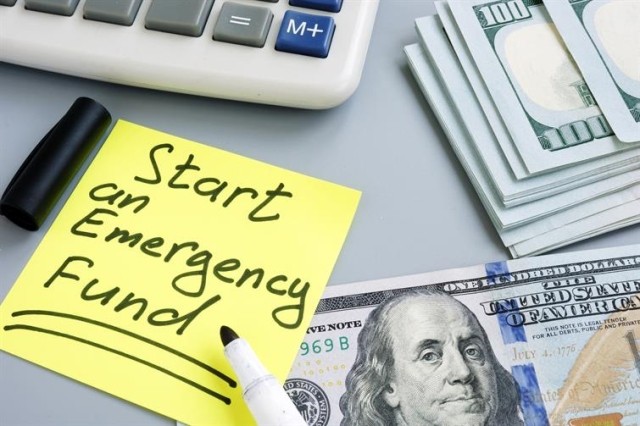Rental properties are excellent sources of income. Leasing your property to a steady, responsible tenant provides opportunities to pay your mortgage, increase your real estate portfolio, and passively build wealth. Sometimes, however, your rental income isn’t as passive as you’d like it to be. The costs of marketing your rental, performing routine maintenance, fixing unexpected repairs, and turning over your unit to new tenants can be pricey and overwhelming. To decrease stress and increase productivity, implement a system for rental property accounting.
An effective rental property accounting system involves organizing your banking details, expense tracking, and tax documentation by:
- Creating a separate banking account for each property
- Implementing a budgeting and expense-tracking plan
- Considering the best method for accounting
- Comparing your rental income against operating expenses
- Maintaining accurate recordkeeping
As with most things, however, rental property accounting is easier said than done. To make the most of your rental finances, keep reading our guide to the property accounting process.
Understanding Your Investment: What Is Rental Property Accounting?
Owning a rental property can be a rewarding investment, but it also comes with financial responsibilities. Rental property accounting plays a crucial role in managing these finances effectively.
In essence, it's the practice of evaluating, maintaining, and managing the financial health of your real estate asset. It starts from the moment you acquire the property and continues throughout your ownership journey.
Here's a breakdown of what it entails:
-
Tracking Income: This involves recording all income generated by the property, including rent payments, late fees, security deposits used for repairs, and any other income sources.
-
Recording Expenses: Every cost associated with owning and maintaining the property needs to be documented. This includes mortgage payments, property taxes, insurance premiums, repairs, maintenance fees, and even depreciation (the gradual decrease in a property's value over time).
-
Financial Reporting: By organizing income and expenses, you can generate reports that provide valuable insights into the property's financial performance. These reports can help you track profitability, identify areas for cost savings, and make informed decisions about your investment.
Benefits of Effective Rental Property Accounting:
Effective rental property accounting is essential for landlords and property managers to maintain financial health and streamline operations. Here are some key benefits that arise from implementing sound accounting practices:
-
Accurate Tax Filing: Maintaining clear records ensures accurate reporting of income and expenses for tax purposes, potentially leading to tax benefits.
-
Informed Investment Decisions: Financial reports help you analyze the property's performance, allowing you to make informed decisions about maintenance, upgrades, and future investments.
-
Improved Cash Flow Management: By tracking expenses, you can identify potential areas for cost savings and optimize your cash flow.
-
Peace of Mind: Knowing your finances are in order provides peace of mind and allows you to focus on managing your property and fostering good relationships with your tenants.
Whether you're a seasoned investor or just starting out, understanding and implementing effective rental property accounting practices is essential for managing your investment successfully.
How Do I Properly Manage My Property’s Finances?
Rental property accounting involves meticulously documenting your property's expenses and comparing them against your income. To keep track of your expenses:
Create a Separate Banking Account for Each Property
Before beginning your journey as a landlord, create a separate bank account for each rental property you own. Maintaining individual accounts ensures you can easily track and reference the financial transactions for each property as they arise. Instruct your tenant to directly deposit their rent into their rental unit’s corresponding bank account. Then, use this account to pay for the property’s mortgage, advertisement initiatives, utilities, maintenance, and repair. If you are responsible for additional property costs, such as lawn care, pest control, or Homeowner’s Association fees, pay them using the rental’s distinct account.
Assigning one bank account for each rental property ensures landlords can accurately track their finances. It also assists landlords by separating their business financials from personal expenses. Effective rental property accounting lies in rigid organization. Maintaining precise records of each rental property’s costs is the first step in efficiently managing your property’s finances.
Implement a Budgeting System
The next step in successfully managing rental accounting is executing a budget and expense tracking system. To begin, create a savings account for your rental property in addition to the checking account. Next, deposit a percentage of the monthly rent payment into the savings account. The savings you deposit can range depending on the rent price you charge. Finally, evaluate which areas of your property often require financing. Usually, most landlords reserve funds for:
-
Marketing: Advertising your property can be expensive. Whether you plan to advertise yourself or hire a professional, budget for the costs of marketing your property to prospective tenants.
-
Routine Maintenance and Unexpected Repairs: Research the average repair cost for large and small items within your rental. Keep track of the cost of replacing major appliances such as air conditioning units, refrigerators, etc., and note each item's age warranty period, expiration, and conditions. Next, review the cost to fix small items, such as chipped paint or normal wear and tear around your property. Once finished, proactively save the costs of those repairs. To prepare for expected and unexpected maintenance, most landlords save 1% of their home's purchase price a year. If your rental property costs $300,000, save $3,000 annually—or $250 a month.
-
Tenant Turnover: Tenant turnover costs an average of $1,000 to $5000 each time a tenant leaves your property. If you have long-term tenants and high retention rates, you won’t need to budget for the cost of turnover often. However, landlords with short-term rentals or low annual retention should budget large sums to prepare for the unit’s advertising, cleaning, repair, and potential vacancy.
It’s important to remember how versatile your budget can be from year to year. The amounts you spend or save can vary, but one thing remains constant: the most crucial aspect of budgeting is its consistent reevaluation. After allocating funds to marketing, routine maintenance, unexpected repairs, and tenant turnover, reconcile your profits and compare them against your budget, savings, and spending.
Reconciling your profits involves comparing your rental property’s income against its bank statements. Analyze your income, how you spend it, and how much you save. Verify the figures are correct, then use your findings to plan your budget for the following month. Repeat this process monthly, review your total earnings and spending quarterly, and report your income annually during tax season. After a year, reference your records to determine how much you should charge in rent, save, and budget for the following year.
Consider the Best Method for Accounting
Comparing your income against your expenses is a crucial aspect of rental property accounting. First decide which basis you’ll use to monitor your income: cash or accrual. Cash-basis accounting occurs when landlords evaluate their income based on money that has exchanged hands. For example, suppose the rent due date is January 1, and the tenant deposits the rent on January 1. In this case, landlords can document their earnings for the month and document the rent as received. If rent is due on January 1, and the tenant does not pay on January 1, landlords do not document any earnings for the month.
Accrual-based accounting occurs when a landlord tracks their income and expenses based on when they expect payment—not when they receive it. For example, suppose the rent due date is January 1, and the tenant pays rent on January 1. In this case, landlords document the rent as their monthly income. However, if the rent due date is January 1, and the tenant does not pay rent on January 1, landlords still document the rent as income for the month. Landlords who use the accrual-based method document all expected payments as income—even if the tenant does not pay on time. Cash-based accounting accounts for actual transactions in and out of your account, while accrual-based accounting is based on the payments you should receive in theory.
Landlords with few rental properties often use cash-based accounting for accurate budgeting, while large companies with multiple real estate holdings use accrual-based accounting for blanket income projections. Once you decide which method works best for you, begin comparing your rental expenses, operating expenses, and mortgage debt against your rental property's monthly income.
Compare Your Rental Income Against Your Operating Expenses
To compare your rental income against your operating expenses, tally your rental property’s total operating expenses together. Operating expenses are the costs incurred while managing a property; they can include marketing, repairs, property insurance and taxes, HOA fees, and lawn care. To help with your calculations, reference your rental property’s bank statements at the end of each billing cycle to calculate the monthly amount you spend on property expenses.
Next, calculate your total rental income. Rental income can include your tenant’s rent payment, any late fees, pet fees, etc. Reference your property’s bank account statements or any rent receipts you provided to tenants as proof of payment. Once you’ve quantified your expenses and income, use those figures to calculate your net operating income.
Your net operating income is the income that remains after you have paid your expenses. You can calculate this figure by subtracting your total operating expenses from your total income amount. Once you find this figure, calculate your debt-to-income ratio.
You can determine your debt-to-income ratio by dividing your total property debts (I.e., your mortgage) by your net income. While most debt-to-income ratios focus on landlords’ gross incomes, using your net income will give you the most accurate results for accounting purposes. Based on your debt-to-income ratio, review, reevaluate, and recreate your rent price and budgeting system to generate your desired income.
Maintain Accurate Recordkeeping
The final factor in rental property accounting is accurate recordkeeping. There are two main types of bookkeeping landlords can use:
-
Manual bookkeeping: involves recording all financial transactions without using a computer or accounting software, such as using a rent roll. Landlords use this system if they would like to calculate all transactions by hand and maintain physical copies of their documents. Manual bookkeeping is convenient since landlords don’t use a computer. However, when landlords record financial documents manually, they risk miscalculation, theft, misplacement, or accidental destruction of their important records.
-
Digital bookkeeping: involves drafting, editing, and storing all financial documents in a remote, secure location. Landlords can keep their records on a local server or a cloud-based platform. While some digital bookkeeping platforms solely store documents online, others offer software that helps landlords track their finances by automatically populating income totals and subtracting expenses. Luckily, Apartments.com has a great solution. Our expense tracking platform helps you summarize rental expenses by property and tax category. From there, you can easily export them to CSV or PDF formats to make doing your taxes a breeze. Unlike our competitors, there’s no need to go off-site to a third party for required forms. With Apartments.com, you can download the required tax filing forms directly from your account, and they are backed up for seven years.
Meticulous bookkeeping revolves around one single purpose: accurate tax documentation. While recording your financial transactions is an excellent way to track your property’s economic success, taxes are the most crucial element of rental property accounting. The federal government requires landlords to report their income or loss from rental properties on a Schedule E tax form. As you document your financials throughout the year, keep track of your financial gains and losses. Staying organized throughout your tenant’s lease term will make taxes effortless when the time comes to file.
If the thought of managing your own taxes seems overwhelming, consider hiring an accountant or utilizing accounting software to perform your record-keeping for you. Accountants can relieve the pressure from stressful record keeping by analyzing your expenses, promoting your income goals, maintaining your records, and filing your taxes.
Frequently Asked Questions
How do I keep track of rental property expenses?
Landlords can keep track of rental property expenses through receipts, rent rolls, and spreadsheets, or they can trust Apartments.com to track their expenses.
How do you manage finances for a rental property?
The key to managing finances for a rental property is staying organized. Implement a budgeting system for your rental property, save for unexpected expenses, compare your income against your spending, and document all your transactions.
While rental property accounting may seem daunting at first, mastering the process is essential for successfully managing investments and achieving long-term financial success in the real estate market. By following the guidelines outlined in this guide and leveraging tools like Apartments.com's expense tracking platform, landlords can navigate the complexities of rental property finances with confidence and ensure the prosperity of their investments for years to come.











